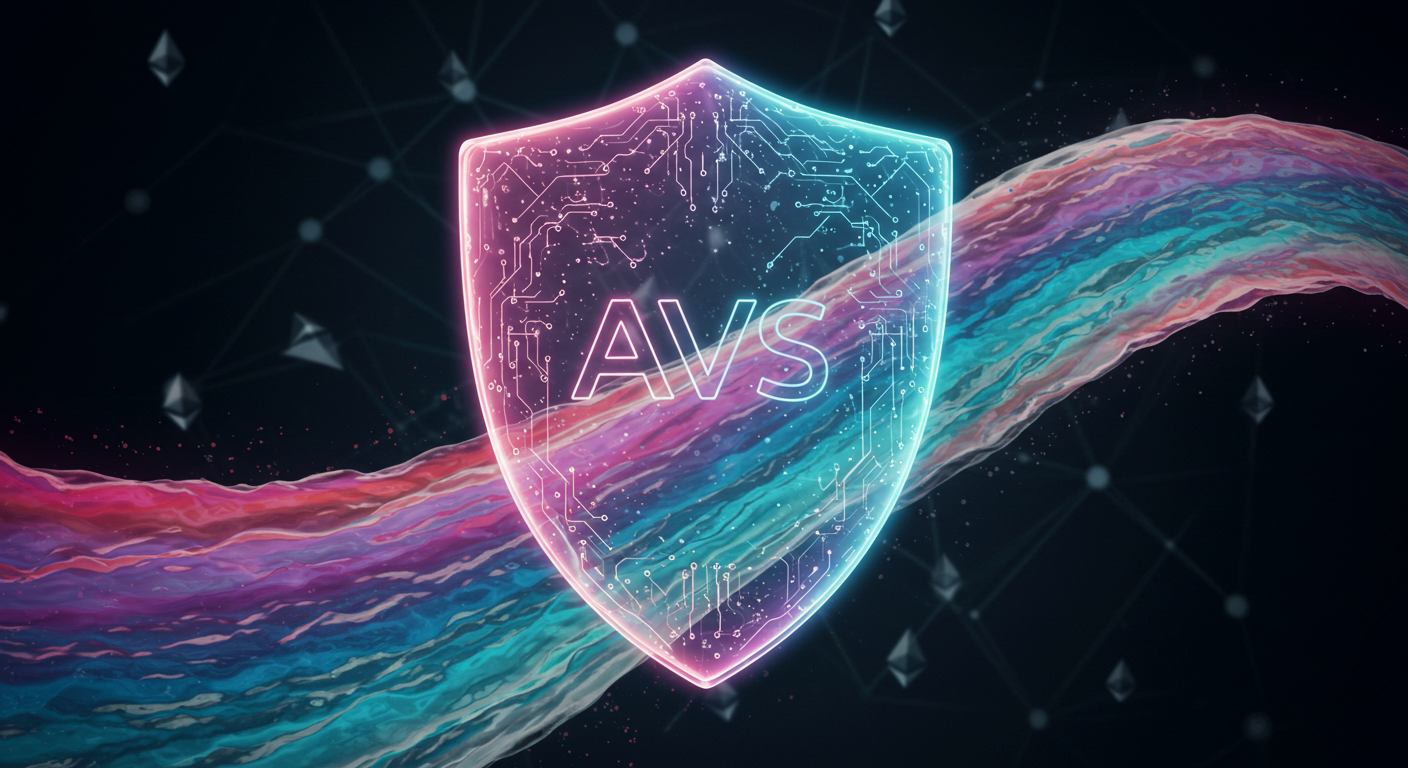An Impenetrable Liquidity Fortress: How Mitosis and EigenLayer AVS Protect Your Assets

1. Introduction
DeFi's "Achilles Heel": The Vulnerabilities of Cross-Chain Bridges
The world of decentralized finance (DeFi) opens up an ocean of possibilities, but this ocean has its dangerous currents. Moving assets between different blockchains – known as cross-chain interaction – remains one of the most vulnerable areas. Multi-million dollar bridge hacks have unfortunately become almost commonplace, leading to serious consequences: loss of user funds, erosion of overall trust in DeFi, and consequently, a slowdown in the growth of the entire industry. Every time users send their ETH, USDC, or other tokens across a bridge, they inadvertently take a risk.
Why is Security the Foundation for Liquidity Protocols?
The critical importance of security in the cross-chain space is explained by two main factors:
- Concentration of Value: Bridges and interoperability protocols handle vast sums of locked assets, making them attractive targets.
- Architectural Complexity: Interaction between independent blockchains with different rules creates additional attack vectors.
For liquidity protocols like Mitosis, whose core mission is to ensure the seamless and efficient movement of capital, guaranteeing security is an absolute necessity. It forms user trust in the safety of their funds and ensures the very functionality of the protocol, without which the idea of free liquidity movement becomes meaningless.
Enter EigenLayer AVS: A New Paradigm in Cross-Chain Security
Fortunately, technological progress doesn't stand still. Mitosis is integrating one of the most discussed and promising technologies – Actively Validated Services (AVS) from EigenLayer. This is a fundamentally new approach that leverages the economic security of Ethereum through the restaking mechanism. Restaking allows Ethereum validators to use their staked ETH to secure additional services (AVS), earning rewards in return. Instead of creating isolated security systems, AVS rely on the existing, time-tested, and massively capitalized collective security of Ethereum.
What Will You Learn From This Article?
In this article, we will dive into the details of how Mitosis uses this cutting-edge technology to create a truly secure environment for your liquidity. We will cover in detail:
- The basics of EigenLayer and the concept of restaking.
- What Actively Validated Services (AVS) are and how they work.
- How exactly Mitosis integrates AVS to secure its cross-chain operations.
- What specific advantages in security and efficiency this offers Mitosis users.
2. Main Content
Part 1: Understanding EigenLayer and Restaking
Before understanding how Mitosis uses AVS, we need to grasp the EigenLayer technology itself and the underlying concept of restaking.
What is EigenLayer?
EigenLayer is a protocol built on Ethereum that introduces restaking, a novel mechanism in cryptoeconomic security. Essentially, EigenLayer allows users who have already staked ETH (or liquid staking tokens like stETH, rETH, cbETH) to secure the Ethereum network to reuse these same staked assets to provide security for other decentralized applications and services built on top of EigenLayer.
How does Restaking work?
Imagine your staked ETH as collateral guaranteeing your honest behavior as an Ethereum validator. EigenLayer allows you to "extend" the effect of this collateral to other systems.
- Commitments: Validators or stakers participating in restaking via EigenLayer take on additional commitments to secure their chosen services (AVS).
- Additional Rewards: For taking on these extra risks and responsibilities, restakers receive additional rewards from the services they help secure.
- Slashing: Critically, if a restaker violates the rules and acts maliciously towards an AVS, their initially staked ETH can be slashed. This creates a powerful economic incentive for honest behavior, as the validator's primary capital is at stake.
Thus, EigenLayer creates a marketplace for decentralized trust, allowing new projects to borrow the cryptoeconomic security of Ethereum instead of building and maintaining their own, often less robust, validation systems.
Part 2: Actively Validated Services (AVS) – The Heart of EigenLayer
AVS are the actual services that utilize restaked ETH via EigenLayer for their security. These can be a wide variety of systems:
- Data Availability Layers
- Decentralized Sequencers
- New Virtual Machines (VMs)
- Oracles
- And, particularly important for us – Interoperability Protocols (Bridges).
How do AVS provide security?
AVS are operated by a set of operators (who are EigenLayer restakers). These operators are responsible for performing the specific functions of the service. For example, in the context of cross-chain interaction, AVS might be responsible for:
- Message Verification: Checking that a message sent from one blockchain was indeed sent and correctly received on another.
- Transaction Attestation: Certifying that a specific event (e.g., locking tokens on one blockchain) actually occurred before allowing a corresponding action (e.g., minting tokens on another blockchain).
Security is ensured through economic incentives: if a majority of AVS operators attest to a valid state or message, it is considered correct. If an operator tries to cheat the system (e.g., attest to a false transaction), they risk losing their staked ETH through EigenLayer's slashing mechanism. This makes attacks economically infeasible, as the cost of an attack (needing to control a large share of restaked ETH) significantly outweighs the potential profit.
Part 3: How Mitosis Uses AVS to Secure Cross-Chain Operations
Now that we understand the basics of EigenLayer and AVS, let's see how Mitosis integrates this powerful technology to protect its liquidity ecosystem.
Mitosis utilizes AVS from EigenLayer as a key component of its security system for verifying cross-chain messages and states.
Let's imagine the process of transferring liquidity using Mitosis from blockchain A to blockchain B:
- Initiation: A user initiates a transfer on network A.
- AVS Verification: A message about this transaction is relayed via an interoperability protocol (like Hyperlane, which Mitosis also uses). AVS operators, running on EigenLayer and securing this communication channel for Mitosis, verify the authenticity of this message. They use their restaked ETH as collateral for their honesty.
- Attestation: Once a sufficient number of AVS operators (weighted by their restaked capital share) attest to the validity of the message, it is considered authentic.
- Execution: Based on this attested message, the Mitosis protocol on blockchain B performs the corresponding action (e.g., provides the user with equivalent liquidity).
Why Does Mitosis Need AVS?
- Enhanced Security: Leveraging the collective economic security of Ethereum via AVS is significantly more robust than relying on traditional bridges with multi-sigs or their own small validator sets. The cost to attack the Mitosis security system, protected by AVS, becomes extremely high.
- Trust Minimization: The need to trust centralized intermediaries or small groups of bridge validators is reduced. Security is provided by a decentralized set of AVS operators with economic incentives.
- Efficiency: EigenLayer allows Mitosis to "rent" security from Ethereum without building its own costly validation infrastructure from scratch.
Thus, integrating with EigenLayer AVS allows Mitosis to focus on its core mission – efficient cross-chain liquidity management – while relying on one of the most robust security mechanisms in the modern Web3 ecosystem.
3. User Benefits and Conclusion
Part 4: What Does AVS Integration Mean For You Personally?
We've figured out how the Mitosis and EigenLayer AVS combination works. But what specific benefits does this bring to the end user who simply wants to move their liquidity safely and efficiently between blockchains?
- Unparalleled Security Level: This is the main advantage. By using AVS, Mitosis leverages the multi-billion dollar economic security of Ethereum. The probability of collusion or attack on AVS operators, who risk their primary ETH stake, is incomparably lower than with traditional bridges secured by small multi-sigs or proprietary validators. Your funds are protected by one of the most robust mechanisms in the crypto industry.
- Reduced Counterparty Risk: You no longer need to blindly trust a small group of bridge validators or a centralized team. Security is provided by a decentralized set of AVS operators whose honesty is guaranteed by economic incentives (fear of losing ETH). This significantly reduces the risk of someone being able to steal funds or censor transactions.
- Increased Reliability and Fault Tolerance: A system secured by numerous independent AVS operators is more resilient to failures. The failure of several operators will not halt the entire verification process, unlike systems with a small number of key validators.
- Potential for Greater Efficiency: While the main focus is on security, using EigenLayer's ready-made security infrastructure allows Mitosis and related protocols (like Hyperlane) to concentrate on optimizing the speed and cost of the cross-chain operations themselves, without being distracted by building their own complex validation system.
Comparison with Traditional Bridges: Why AVS is a Step Forward
Let's briefly compare the Mitosis + AVS approach with the security of typical cross-chain bridges:
As seen in the table, using EigenLayer AVS provides a fundamentally higher level of security and decentralization compared to outdated models.
Conclusion: Mitosis – Security as a Priority
In a world where bridge hacks have become commonplace, Mitosis makes a conscious bet on security as its top priority. Integrating with EigenLayer AVS is not just a marketing move, but a strategic decision aimed at protecting user funds with the most advanced Web3 technologies.
Key Takeaways:
- Mitosis uses EigenLayer AVS to verify cross-chain messages, relying on Ethereum's economic security.
- This provides a significantly higher level of security, decentralization, and fault tolerance compared to traditional bridges.
- Mitosis users benefit from reduced risks and increased reliability when moving liquidity between networks.
By choosing Mitosis, you are choosing a protocol that makes no compromises on security. We are building the future of cross-chain DeFi, where users can be confident in the safety of their assets.
Learn more about Mitosis and follow updates:
- Official Website: https://www.mitosis.org
- Twitter: https://twitter.com/MitosisOrg
- Discord: https://discord.com/invite/mitosis
- Medium: https://medium.com/mitosisorg
- Blog: https://blog.mitosis.org/


Comments ()